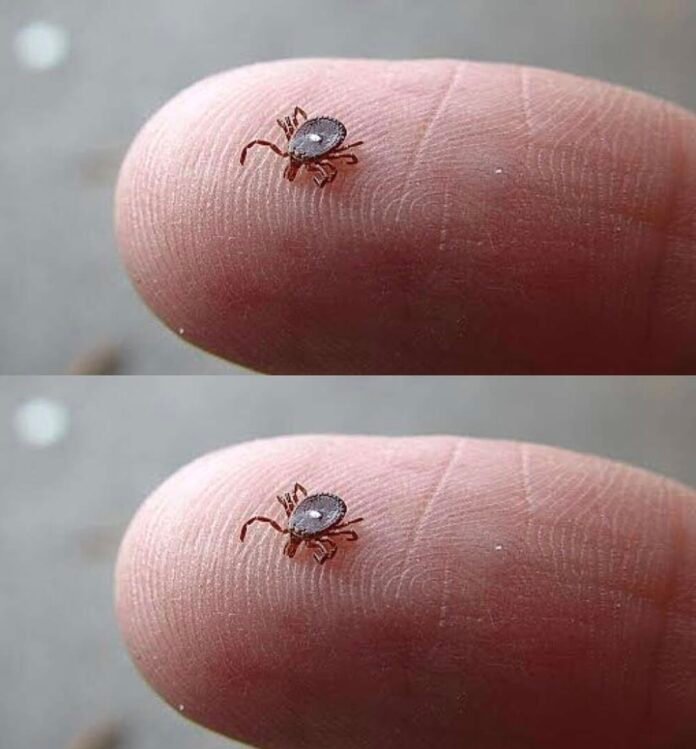A few weeks ago, I was out in the backyard battling my ancient, wheezy old lawnmower when something happened that made my skin crawl—literally. My golden retriever, Mochi, was stretched out under our big oak tree, basking in the shade while I pushed along in the heat, when I suddenly felt that unmistakable itchy-crawly sensation on my ankle. At first, I assumed it was just another mosquito bite, nothing unusual. But when I glanced down, my stomach dropped.
It wasn’t a mosquito. It was a tick. And not just any tick—it was a lone star tick, with its creepy little white dot staring right back at me.
If you’ve ever come face-to-face (or ankle-to-skin) with a tick, you probably understand the instant panic that sets in. It’s not like a bee sting or a mosquito bite. Ticks are sneaky, they’re clingy, and they carry some seriously unwelcome baggage. Let me walk you through exactly what I learned during and after my encounter—and what you need to know in case this ever happens to you.
What Is a Lone Star Tick?
Named for the small white spot on the back of the female, the lone star tick may look unassuming at first glance. But don’t let its size fool you. These tiny parasites are aggressive, fast-moving, and have a knack for tracking down warm-blooded hosts. Unlike other types of ticks that simply wait for you to brush past them, the lone star tick actively seeks you out.
They’re found mostly in the southeastern and eastern United States, but their range is expanding every year. If you’re spending time in wooded areas, tall grasses, or even suburban yards with thick landscaping—you’re in their territory.
Step One: Don’t Panic (Even If You Want To)
I’ll admit—my first instinct was to panic. There’s just something about a tick that feels so invasive. But here’s the truth: panicking doesn’t help. Acting calmly and swiftly does.
If you spot a lone star tick on your skin:
- Do not scratch, crush, or pull at it recklessly.
- Do not apply oils, alcohol, or try to “smother” it.
What you should do is grab a pair of fine-tipped tweezers, get as close to your skin as possible, and pull the tick out slowly and steadily. Avoid twisting, jerking, or yanking it quickly. You want the entire tick to come out intact—especially the mouthparts. If any part of it gets left behind, it can cause irritation or even infection.
Once it’s out, wash the area thoroughly with soap and warm water, or wipe it down with rubbing alcohol. Then wash your hands. Toss the tweezers into some boiling water or alcohol for good measure.
Step Two: Save the Tick (Yes, Really)
This part might sound gross, but it’s important. Don’t throw the tick away. Instead, place it in a small plastic container or seal it between two pieces of tape. Label it with the date and location where it bit you.
Why? Because if you start experiencing symptoms—such as a rash, fever, fatigue, muscle aches, or headaches—your doctor will want to know exactly what kind of tick you were exposed to.
Having the actual specimen could make diagnosis and treatment much quicker and more accurate.
Step Three: Watch Your Body Closely
The time after a tick bite is not when you want to forget or “wait and see.” Lone star ticks are notorious for causing a variety of health issues, from Southern tick-associated rash illness (STARI) to allergic reactions to red meat, a condition known as Alpha-gal syndrome.
That means for the next 2 to 4 weeks, you need to monitor:
- The bite site — watch for redness, swelling, or a bullseye-shaped rash
- Your overall health — be alert for fever, joint pain, fatigue, or any strange symptoms
If you feel “off” or notice anything unusual, contact your doctor immediately and let them know about the tick and the date of the bite.
How to Prevent Another Encounter
As unpleasant as that day was, it was a wake-up call. If you spend any time outside—gardening, hiking, mowing the lawn, or just relaxing—you need to take preventative measures seriously.
Here’s what I’ve started doing, and what you should too:
- Dress smart: Long sleeves, pants tucked into socks, light-colored clothing (to spot ticks easier)
- Use tick repellent: Look for repellents that contain DEET, permethrin, or picaridin. Apply it to clothing and exposed skin.
- Create a tick-safe yard: Keep grass trimmed short, clear brush and debris, and place wood chips or gravel along yard edges to create a tick barrier.
- Treat pets regularly: Mochi gets his tick prevention meds now like clockwork.
- Shower immediately after being outdoors: And check yourself thoroughly—scalp, behind the ears, armpits, waistline, behind the knees, and around the ankles.
- Throw clothes in the dryer on high heat for 10 minutes to kill any ticks that may be hiding.
Don’t Wait Until It Happens to You
Here’s the deal: Lone star ticks are more than a nuisance—they’re a health hazard. But you don’t need to live in fear. You just need to be informed, prepared, and ready to act.
Looking back on my experience, I’m still a little grossed out, not going to lie. But I’m also proud I handled it (okay, eventually handled it) the right way. I caught it early, stayed alert to symptoms, and now I take better precautions to protect myself, my family, and yes—even Mochi.
So if you ever feel that weird tingle on your leg while you’re out enjoying the sunshine, don’t dismiss it. Check. Act. Protect. And maybe invest in a better lawnmower while you’re at it.



